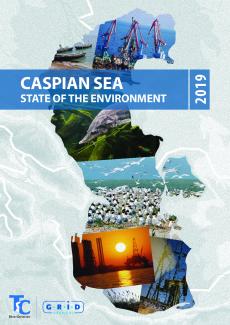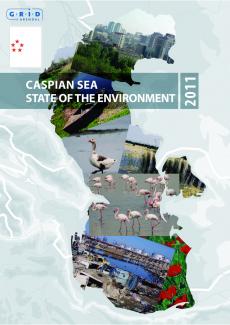
Key Convention documents
This section contains other important Tehran Convention documents.
Institutional arrangements governing the functioning of the Tehran Convention
Financial Rules
The Financial Rules were adopted at COP 1 in Baku, Azerbaijan, 23-25 May 2007.
Rules of Procedure
The Rules of Procedure were adopted at COP 2 in Tehran, Iran, 10-12 November 2008.
Draft Terms of Reference and arrangements for National Convention Liaison Officers (NCLOs)
NCLOs, engaged at the nomination of their Governments through a contract with the (interim) Secretariat, play an important catalytic and supportive role in mobilizing internal action and support for the implementation of the Convention and the development of its Protocols, via providing information and consultancy assistance to the Tehran Convention Secretariat on matters of their countries’ concern.
The draft Terms of Reference of the National Convention Liaison Officers (NCLOs) will be submitted to the COP6 for its consideration.
Tehran Convention programme documents
Strategic Convention Action Programme (SCAP)
In accordance with Article 18 (2) of the Tehran Convention, the Parties developed the Strategic Convention Action Programme (SCAP). The SCAP is a comprehensive, long-term agenda and framework for the implementation of the Tehran Convention and its Protocols over a period of 10 years. It was adopted at COP 2 in Tehran, Iran, 10-12 November 2008.
The Public Participation Strategy
The Strategy for Civil Society Engagement in the Protection of the Marine Environment of the Caspian Sea was presented at the COP3 in Aktau, Kazakhstan, 10 – 12 August 2011. It contains an analysis and a number of recommendations to improve access to information and participation in decision-making and action towards the implementation of the Tehran Convention and its Protocols at the local, national and regional levels.
Caspian Sea Plan Concerning Regional Co-operation in Combating Oil Pollution in Cases of Emergency (Aktau Protocol Implementation Plan)
The arrangements in the Aktau Protocol Implementation Plan are intended to facilitate the development of joint response operations and to co-ordinate the use of the available resources in the region. They also outline in advance the financial conditions and administrative clauses of the actions, thus permitting rapid intervention in case of emergency by removing the need for lengthy negotiations during the course of the event.
The draft Aktau Protocol Implementation Plan will be submitted to the COP6 for its consideration.
Environmental Monitoring Programme (EMP)
The objectives of the EMP to develop a framework providing the necessary data and information on the Caspian environment in order to; initially provide data on the state of the Caspian environment, highlight pollution problems, provide biological related data which will support the broad objective of tracking changes of the health and diversity of ecosystems in, and adjacent to, the Caspian Sea
The Environmental Monitoring Programme was welcomed at COP4, Moscow, Russian Federation, 10-12 December 2012.
State of Environment Reports
In complying with the Articles 19 (3) and 21 (2) of the Tehran Convention on monitoring and the exchange of and access to information, the Parties regularly review and evaluate the state of the marine environment of the Caspian Sea, including the level of pollution and its effects. Also the Protocols contain a number of provisions that require monitoring and reporting in their respective thematic areas by the Parties.
So far two State of the Caspian Sea Environment (SoE) Reports were produced by the Caspian states and coordinated by the Tehran Convention interim Secretariat.
The second State of the Caspian Sea Environment Report was prepared following a decision of COP 5 in Ashgabat, Turkmenistan, on 30 May 2014, which also stressed the importance of regular reports on the State of the Environment of the Caspian Sea. The report was launched in 2019.
The first State of the Caspian Sea Environment Report was presented at the third Meeting of the Conference of the Parties (COP 3) in Aktau, Kazakhstan 10-12 August 2011.


